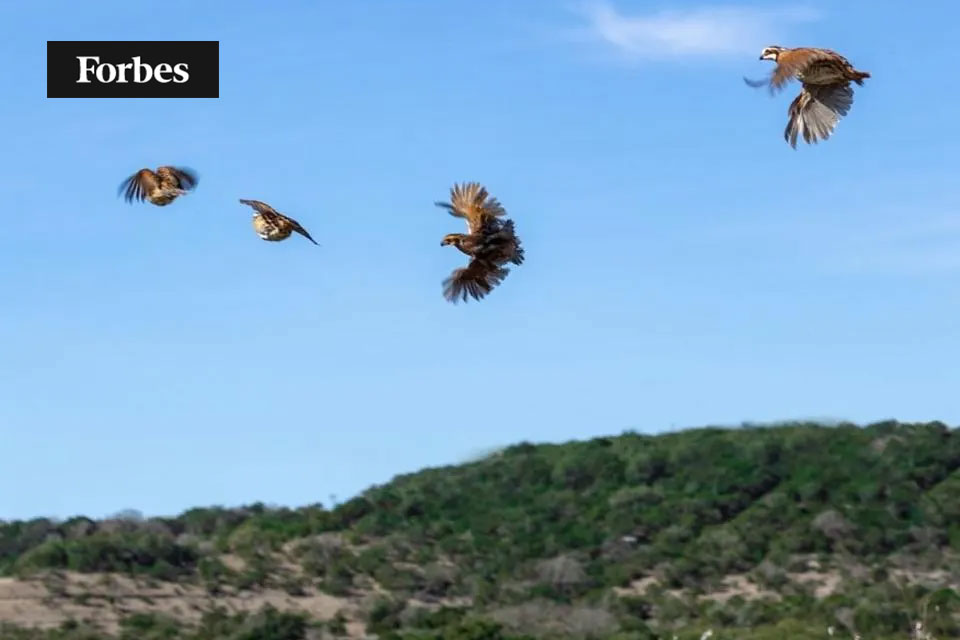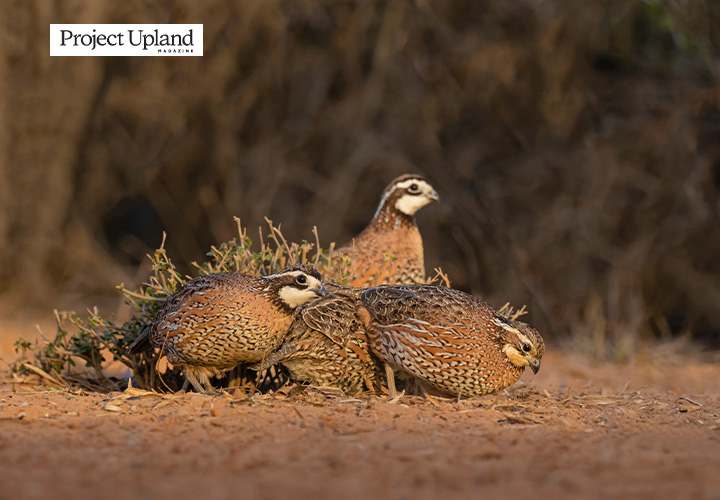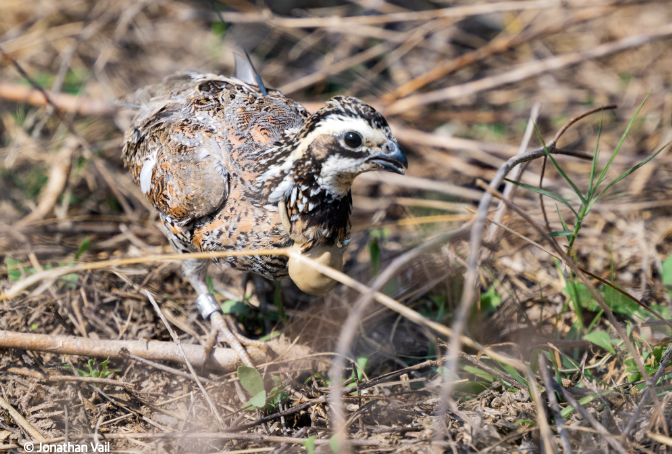- Medicated Quail Feed for Treatment of Parasitic Infections
- info@quailguard.com
[ Forbes ] Heroic Efforts By Hunters To Save Texas Quail May Soon Pay Off
Author: Chris Dorsey | Published: May 29, 2024
With ample rainfall, healthy cover, and an abundance of quail in the summer of 2010, hunters in the Rolling Plains region of West Texas anticipated another bumper crop of their beloved birds the following season. Instead, the birds vanished, leaving biologists mystified by the crash. It was a wildlife mystery that launched a multi-year investigation.
For noted quail expert, Dr. Dale Rollins of the Rolling Plains Quail Research Foundation, it was a wakeup call that something in the quail equation had changed. To find out why the birds didn’t respond, Rollins assembled a team of scientists from across Texas and neighboring state universities whose specialties covered the gamut of wildlife maladies. The disappearance of the bobwhite quail was a whodunit and the region’s top wildlife minds were brought in to solve the mystery.

After sampling more than 2,000 quail across 35 counties of West Texas, traditionally a stronghold for wild quail, the researchers discovered a surprisingly high infestation rate of both eye and intestinal parasites in the birds—more than 50 percent had eyeworms and an astounding 90 percent carried caecal worms.
With those alarming findings, a group of quail hunters from the Dallas area who were part of the non-profit Park Cities Quail Coalition (PCQC), funded a $2 million research grant to better understand the problem and to seek solutions. They next brought in Dr. Ron Kendall, a South Carolina native with a lifelong passion for bobwhite quail hunting—so much so that he had moved to West Texas, chasing the last vestiges of some of the nation’s best wild bird hunting.

The notion that parasites might be the cause of the quail declines wasn’t entirely new, for red grouse managers in Scotland had dealt with bird declines of their own, and later discovered that parasites were the culprit. Red grouse are a highly prized and valuable species (driven gamebird shooters from across Europe and America spend big each fall to enjoy what is referred to as the sport of kings). Managers discovered that by spreading inoculated grit on the moors (the tiny stones needed for birds to digest seeds in their diet), the parasites could be significantly controlled.

While researching a book on ruffed grouse in the late 1980s, I discovered that scientists from the University of Wisconsin had similarly identified a parasite (Dispharynx nasuta) that they hypothesized was causing populations of the woodland gamebird to decline. Ruffed grouse are known to experience boom and bust population cycles in many parts of their range and while the parasites seldom killed the birds outright, they so weakened the grouse that they became susceptible to predators like goshawks and great horned owls.
The same can be said for eyeworms and caecal worms in quail. While the parasites rarely kill the birds, they make them far more vulnerable to predation and they are often eaten by swift-flying Cooper’s hawks (which look upon a quail much the same way Paul Prudhomme eyes a redfish), among a slew of other avian and ground predators.

In 2012, ranch owner and devout quail aficionado Rick Snipes, who then headed up the Rolling Plains Quail Research Foundation, and Rollins approached Kendall to lead the effort to solve the quail riddle, which led to the creation of the Texas Tech Wildlife Toxicology Lab.
Thanks to some $6 million in funding from Texas quail hunters through PCQC, the work of Kendall and others resulted in an inoculated feed that received approval this week from the Food and Drug Administration after eight long years of trials. Quail and bighorn sheep are the only two species for which the FDA has ever approved a medicated feed. The FDA’s stringent testing requirements seemed a head-scratcher to some given that the same drug in the quail feed—fenbendazole—has been used for more than 30 years in many livestock feeds for parasite control.
The inoculated feed will be sold under the trade name QuailGuard, and is not intended for year-round use, but rather to be applied in the spring and fall, the most opportune time to boost quail numbers.



